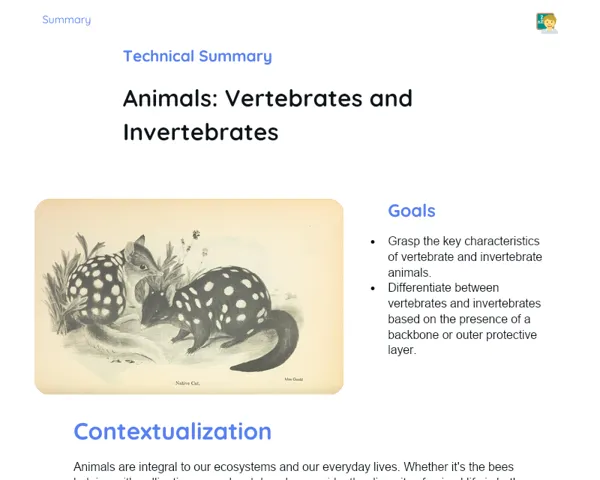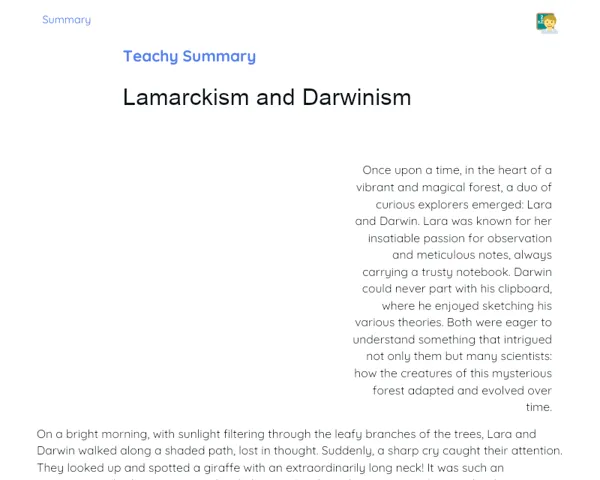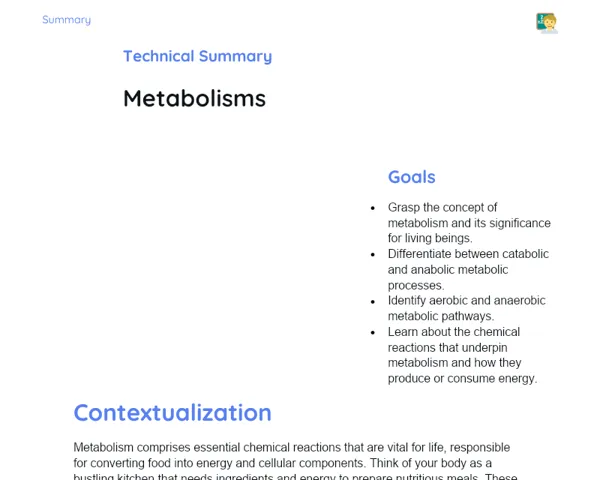Objectives
1. 🌿 Grasp the key concepts and types of ecological relationships, identifying how they shape the interactions within ecosystems.
2. 🔍 Distinguish between harmonious and disharmonious relationships, as well as intra- and interspecific interactions, developing a knack for identifying and classifying these interactions among various organisms.
3. 🌍 Utilize your knowledge to discuss and analyze real-world ecological scenarios, appreciating how our understanding of these relationships is vital for environmental conservation.
Contextualization
Did you know that introducing just one new species into an ecosystem can trigger a ripple effect, shifting the entire balance of the environment? A prominent example is the case of rabbits in Australia. When European settlers brought rabbits to the continent, they had no natural predators and multiplied rapidly, devastating large swathes of vegetation. This incident underscores the fragility of ecosystems and illustrates why grasping ecological relationships is essential to anticipate and mitigate negative impacts on our environment.
Important Topics
Harmonious Relationships
Harmonious relationships are those where various species enjoy mutual benefits or where one species benefits without significantly impacting the other. Examples include mutualism, where both parties thrive, commensalism, where one party benefits without affecting the other, and inquilism, where one species occupies the shelter of another without causing harm. These relationships are pivotal for ecological stability.
-
Mutualism: A classic case is the relationship between flowering plants and pollinators, like bees and butterflies, where plants provide nectar and pollinators assist in plant reproduction.
-
Commensalism: An example is the relationship between pilot fish and sharks, whereby the fish gain protection from the shark without affecting it.
-
Inquilism: This can be seen in the relationship between epiphytes and trees, where these plants reside on other plants, using them merely for support without competing for resources.
Disharmonious Relationships
Disharmonious relationships involve one species benefiting at the cost of another, causing imbalance. They include predation, parasitism, and competition. While these relationships are essential for population control and natural selection, they can lead to ecological imbalances and species extinctions.
-
Predation: A classic example is a lion hunting a zebra, where the predator gains while the prey suffers.
-
Parasitism: Ticks feeding on the blood of mammals exemplify this; here, the parasite gains nourishment while the host is harmed.
-
Competition: This occurs between species vying for limited resources such as food, water, or space, potentially leading to competitive exclusion, where one species outcompetes and excludes another.
Population Dynamics
Population dynamics examines how the size and composition of species populations fluctuate over time, influenced by factors like births, deaths, migrations, and ecological interactions. This knowledge is critical for sustainable natural resource management and environmental conservation.
-
Exponential Growth: Under ideal conditions, populations can grow rapidly, but this is seldom the case in the natural world due to resource constraints.
-
Logistic Growth: This model of population growth considers the carrying capacity of the environment, leading to stabilization around an optimal level.
-
Population Cycles: Certain species, like hares and lynxes, display interconnected population cycles, where the rise of one results in the increase of the other, followed by a decrease.
Key Terms
-
Harmonious Relationships: Interactions that benefit all parties involved or one party without negatively impacting the other.
-
Disharmonious Relationships: Interactions where one party benefits at the expense of the other, such as predation and parasitism.
-
Population Dynamics: The study of variations in the size and composition of populations over time, shaped by biotic and abiotic factors.
For Reflection
-
How can we leverage the ecological relationships studied in managing protected areas, like parks?
-
In what ways could introducing a new species into an ecosystem shift existing ecological relationships and population dynamics?
-
What conservation strategies should be implemented, considering both harmonious and disharmonious relationships within an ecosystem?
Important Conclusions
-
We acknowledge the significance of ecological relationships, realizing that they are fundamental to the dynamics and stability of ecosystems.
-
We explored the different types of ecological interactions, distinguishing harmonious relationships, such as mutualism, from parasitism and competition, and how each one influences biodiversity and species survival.
-
We delved into the effects of human activities on ecological relationships and how effective management of natural resources is vital for preserving biodiversity and ensuring the sustainability of ecosystems.
To Exercise Knowledge
Create an observation journal for a small ecosystem near your area, such as a garden or park. Document the interactions among plants, animals, and other organisms over the course of a week. Try to identify examples of harmonious and disharmonious relationships and discuss their effects on the ecosystem.
Challenge
Ecologist Challenge: Research a project focused on the reintroduction of endangered species in India or elsewhere globally. Present how ecological relationships were taken into account during the planning and execution of the project, and what positive impacts have been noted so far.
Study Tips
-
Use mind maps to visualize the different ecological relationships and their implications in ecosystems. This will help you understand the information more clearly and in an organized manner.
-
Engage in online discussions or study groups to share experiences and perspectives on the topic. Hearing diverse points of view can enrich your understanding of ecological relationships.
-
Try explaining what you have learned to a friend or family member. Teaching is an excellent way to reinforce your own comprehension and identify areas needing more focus.



